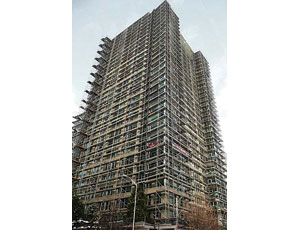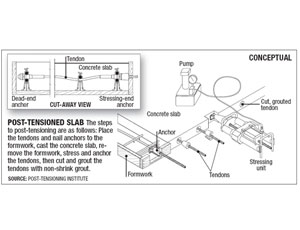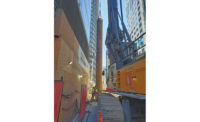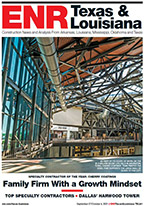On April 15, opposing sides in a debate over the fate of a deteriorating, nine-year-old Seattle apartment tower presented their positions regarding the building’s future safety to Seattle’s Dept. of Planning and Development (DPD). McCarthy Building Cos. maintains the 26-story McGuire Apartments, with its corroding post-tensioned slab system, can be economically fixed. The owner disagrees.

The structure’s current acceptable “level of integrity” can be maintained through “basic” repairs commonly performed in buildings of this type, says the St. Louis-based contractor. McCarthy plans to file repair designs with the DPD “soon.”
The local owner, Carpenter’s Tower LLC, agrees only that the building is currently safe. But conditions are worsening, and the owner is vacating the building over the next several months to ready it for demolition, due to “extensive construction defects, which are financially impractical” to fix.
The city’s charge is to determine whether the building is safe and will remain safe, says Jonathan C. Siu, DPD’s principal engineer. But once a determination is made regarding safety, the owner has the right to remediate the building any way it chooses. “If the owner wants, it can remediate by demolishing the building,” says Siu.
Based on the April 15 meeting, DPD has asked both sides for more information, including a report from McCarthy’s three engineers: Randall W. Poston, Richard O. Lewis and Brian B. Hope.
The engineers’ analyses show the building is “safe and is currently capable of carrying loads well in excess of the city’s building requirements,” says McCarthy.
On April 10, Siu sent a letter to the owner’s adviser, Kennedy Associates, saying DPD, based on the owner’s engineer’s recommendation, will issue later this year a “hazard correction order,” which will direct the owner to correct unsafe conditions or vacate by Dec. 31.
The concrete frame has a two-way, unbonded post-tensioned slab system. Post-tensioning is a method of reinforcing concrete. During construction, internal forces are induced in the slab through stressing to counteract anticipated external loads, according to the Post-Tensioning Institute (see drawing).
McGuire’s problems center around corrosion of steel tendons at stressing-end anchors due to a lack of corrosion-resistant paint and non-shrink grout, says the owner, which sued McCarthy and the tower’s local architect, Hewitt, in 2007.
Ongoing repairs soon will be stopped, according to W. Gene Corley, senior vice president of CTLGroup, Skokie, Ill. CTL is providing the owner engineering services as a consultant to the local construction adviser, OAC Services Inc.
In a letter to OAC, Corley says metallurgist William Hartt has concluded “there is a likelihood of corrosion-related tendon fractures commencing in 2011.” By 2019, roughly one-third of the tendons will have failed. Significant degeneration of floor-slab load-carrying capacity likely would begin after 2011, says Corley. But potential “material fall hazards” could begin next year, he says.





Post a comment to this article
Report Abusive Comment